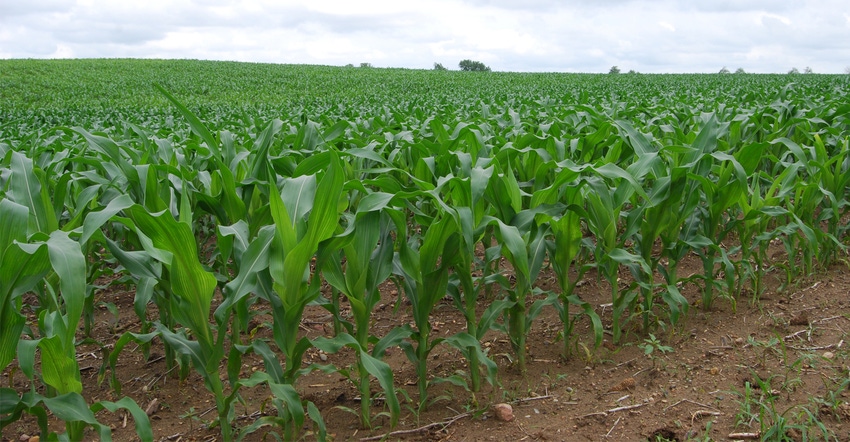January 11, 2018

With new tape-based sensors attached to the plants, Iowa State University plant scientist Patrick Schnable was able to measure how long it took two kinds of corn plants to move water from roots to upper leaves.
“With a tool like this, we can begin to breed plants that are more efficient in using water,” he says. “That’s exciting. We couldn’t do this before. But once we can measure something, we can begin to understand it.”
The tool making these water measurements possible is a tiny graphene sensor that researchers have dubbed a “plant tattoo sensor.” The graphene is a carbon honeycomb an atom thick, which conducts electricity and heat. The graphene-on-tape technology in this study has also been used to produce wearable strain and pressure sensors, including sensors built into a “smart glove” that measures hand movements.
The research has been primarily supported by the Faculty Scholars Program of Iowa State’s Plant Sciences Institute.
Liang Dong, an ISU associate professor of electrical and computer engineering, is a developer of the technology. Seval Oren, a doctoral student in electrical and computer engineering, helped develop the sensor-fabrication technology. Others who helped test applications of the sensors are Schnable, director of Iowa State’s Plant Sciences Institute, and Halil Ceylan, a professor of civil engineering.
Goal: Cheaper, high-performing sensors
“We’re trying to make sensors that are cheaper and still high performing,” Dong says. To do that, the researchers have developed a process for fabricating intricate graphene patterns on tape. It’s the first step in creating indented patterns on the surface of a polymer block, either with a molding process or with 3-D printing. Engineers apply a liquid graphene solution to the block, filling the indented patterns. They use tape to remove the excess graphene. Then they take another strip of tape to pull away the graphene patterns, creating a sensor on the tape.
The process can produce precise patterns as small as 5 millionths of a meter wide — just a 20th of the diameter of the average human hair. Making the patterns so small increases the sensitivity of the sensors.
The process, for example, produced a detailed image of ISU’s Cyclone mascot that was less than 2 millimeters across. “This is probably the smallest Cyclone,” Dong says. “This fabrication process is very simple. You use tape to manufacture these sensors. The cost is just cents.”
In the case of plant studies, the sensors are made with graphene oxide, a material sensitive to water vapor. The presence of water vapor changes the conductivity of the material, and that can be quantified to accurately measure transpiration (release of water vapor) from a leaf.
The plant sensors have been successfully tested in lab and pilot field experiments. A new three-year, $472,363 grant from USDA will support more field testing of water transport in corn plants. Michael Castellano, an ISU agronomy professor, will lead the project. Co-investigators include Dong and Schnable.
ISU Research Foundation applies for patent
ISU Research Foundation has applied for a patent on the sensor technology. The foundation has also granted an option to commercialize the technology to EnGeniousAg, an Ames startup company co-founded by Dong, Schnable, Castellano and James Schnable, an assistant professor of agronomy and horticulture at University of Nebraska-Lincoln. He is a collaborator on another ISU sensor project that sparked establishment of the company (and he’s Patrick Schnable�’s son).
“The most exciting application of the tape-based sensors we’ve tested so far is the plant sensor,” Dong says. “The concept of wearable electronic sensors for plants is brand new. And the sensors are so tiny they can detect transpiration from plants, but they won’t affect plant growth or crop production.”
That’s not all the sensors can do. The technology could “open a new route” for a wide variety of applications, the researchers say, including sensors for biomedical diagnostics, for checking structural integrity of buildings, for monitoring the environment and, after appropriate modifications, for testing crops for diseases or pesticides.
Source: Iowa State University
You May Also Like




